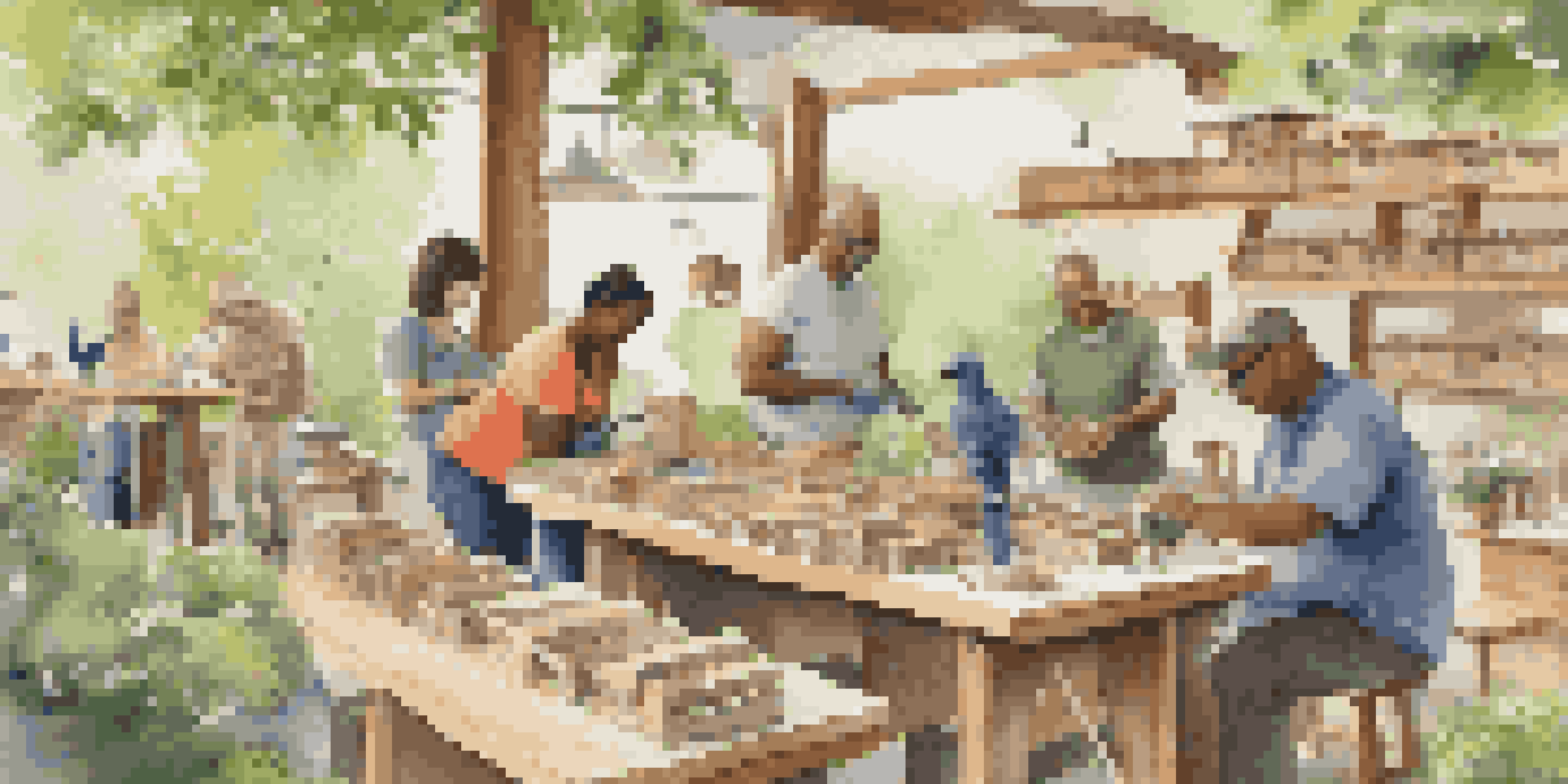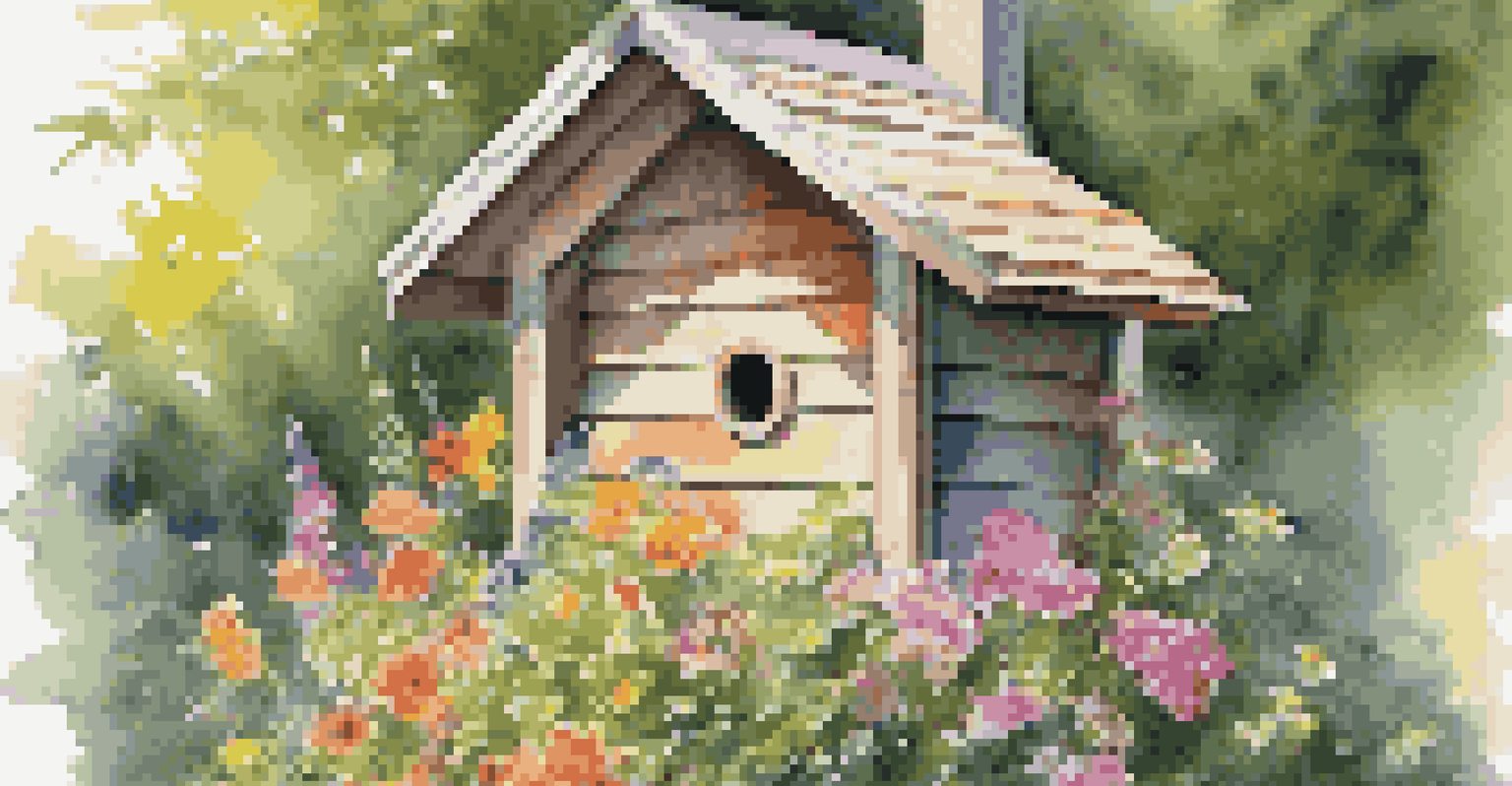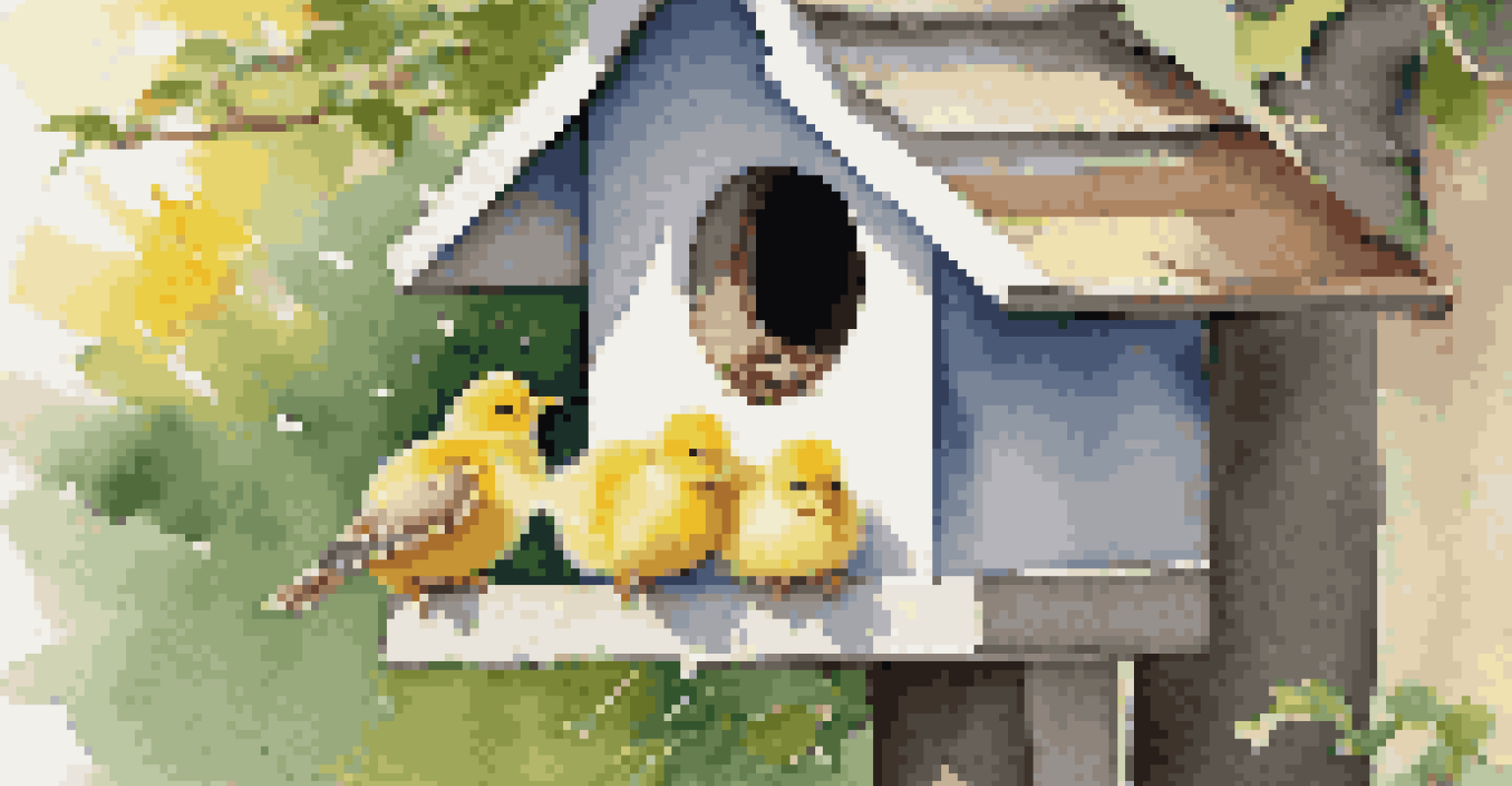Birdhouse Accessibility: Creating Inclusive Designs for All

Understanding Birdhouse Accessibility Needs
Birdhouse accessibility is about ensuring that all individuals, regardless of their physical abilities, can enjoy and engage with nature. Just like how we consider wheelchair ramps and wide doorways in buildings, birdhouses can also be designed with inclusivity in mind. This means taking into account various factors such as height, ease of access, and visibility.
Nature is not a place to visit. It is home.
For instance, a birdhouse placed too high might be out of reach for someone using a wheelchair. Similarly, if the entrance hole is too small, it may not accommodate larger bird species, which could discourage diversity in your garden. Inclusivity is key to attracting a variety of birds while making it easier for everyone to observe and appreciate these winged visitors.
By incorporating accessibility features into birdhouse designs, we can create an environment where everyone feels welcome to engage with wildlife. This is not just a benefit for humans; it enhances the overall ecosystem, making our gardens more vibrant and alive.
Key Features of Accessible Birdhouse Designs
When designing birdhouses with accessibility in mind, several key features should be prioritized. First, consider the height at which the birdhouse is installed. A height of around four to six feet is generally accessible for most individuals, allowing easy observation without the need for ladders or tools. Additionally, ensuring a stable platform will help those who may need to lean or support themselves.

Another important feature is the entrance size. A larger entrance can accommodate different bird species and make it easier for birds with disabilities to enter and exit. Furthermore, using materials that are lightweight yet durable can simplify maintenance and ensure that the birdhouse can withstand the elements without being too heavy to handle.
Design Birdhouses for Everyone
Creating birdhouses with accessibility in mind ensures that people of all abilities can engage with and appreciate wildlife.
Lastly, consider visibility. Position the birdhouse in a location where it can be easily seen from various angles. This not only enhances the viewing experience for people of all abilities but also helps in monitoring the birdhouse for any signs of wear or damage, ensuring it remains a safe habitat for feathered friends.
Choosing the Right Materials for Inclusivity
Material selection plays a crucial role in creating accessible birdhouses. Opting for lightweight, durable materials like cedar or recycled plastics can make a significant difference. These materials are not only easy to handle but also resistant to elements, ensuring longevity without the added weight.
The best way to make children good is to make them happy.
Another consideration is the finish of the birdhouse. Smooth surfaces are easier to clean and maintain, which is especially important for individuals who may have mobility challenges. Additionally, using non-toxic paints and finishes ensures the safety of both birds and humans, creating a healthy environment for all.
Finally, incorporating reflective materials or bright colors can enhance visibility for individuals with visual impairments. By prioritizing materials that promote accessibility, we can ensure that birdhouses are both functional and inviting for everyone.
Designing for Visibility and Interaction
Creating an engaging birdhouse environment goes beyond just accessibility; it also means designing for visibility and interaction. Placing birdhouses in well-lit areas will help attract both birds and birdwatchers. This can be achieved by ensuring the birdhouse is not hidden behind dense foliage, which can obstruct the view.
Incorporating features like observation windows or open platforms can encourage interaction. These design elements allow individuals to observe birds without disturbing them, making the experience more enjoyable. Imagine a birdhouse with a small viewing window—how exciting it would be to see a family of chicks peeking out!
Community Involvement is Key
Engaging local communities in birdhouse projects fosters collaboration and raises awareness about the importance of inclusivity in nature.
Additionally, consider using bird feeders in conjunction with the birdhouse. This not only attracts birds but also brings people together, creating a community space where everyone can gather to appreciate nature. Designing with visibility and interaction in mind fosters a deeper connection between people and wildlife.
Community Engagement in Birdhouse Projects
Engaging the community in birdhouse projects can amplify accessibility efforts. Hosting workshops where community members can come together to build birdhouses fosters collaboration and inclusivity. It also ensures that diverse perspectives are considered, leading to designs that cater to a wider range of needs.
Involving local schools, organizations, or birdwatching clubs can create a sense of ownership and pride in the project. This not only promotes awareness about accessibility in nature but also encourages younger generations to appreciate wildlife. Imagine children learning about birds while actively participating in creating habitats!
Furthermore, organizing birdwatching events or accessibility tours can help highlight the importance of inclusive designs. Sharing knowledge about the benefits of accessible birdhouses encourages more individuals to consider these elements in their own gardening and wildlife projects.
Challenges in Creating Accessible Birdhouses
While the goal of creating accessible birdhouses is commendable, there are challenges that designers and builders may face. One major hurdle is the lack of awareness about the importance of accessibility in wildlife habitats. Many people may not consider how their designs affect individuals with different abilities, leading to missed opportunities for inclusivity.
Another challenge is balancing aesthetics with functionality. Birdhouses must be visually appealing to attract attention but also practical for accessibility. Striking this balance can require creativity and an understanding of both design principles and accessibility needs.
Future Trends Emphasize Innovation
Emerging trends like smart technology and modular designs are set to revolutionize accessible birdhouse construction for enhanced usability.
Lastly, securing funding or resources for building accessible birdhouses can be difficult. Community support and collaboration can help overcome this barrier, but it requires commitment and ongoing advocacy to ensure that these projects come to fruition.
Future Trends in Birdhouse Accessibility
As awareness of accessibility continues to grow, we can expect to see innovative trends in birdhouse design. One emerging trend is the use of smart technology, which can help monitor birdhouse activity. This technology can be especially beneficial for individuals with mobility challenges, allowing them to engage with birdwatching from the comfort of their homes.
Another trend is the incorporation of modular designs. These birdhouses can be easily customized and adjusted to meet individual needs, making them more accessible for various users. Imagine a birdhouse that can be adjusted in height or features based on personal requirements!

Finally, sustainability will play a crucial role in future designs. As more people focus on eco-friendly practices, creating accessible birdhouses using sustainable materials will not only benefit birds but also promote a healthier environment. The future of accessible birdhouses looks promising as we continue to innovate and prioritize inclusivity.